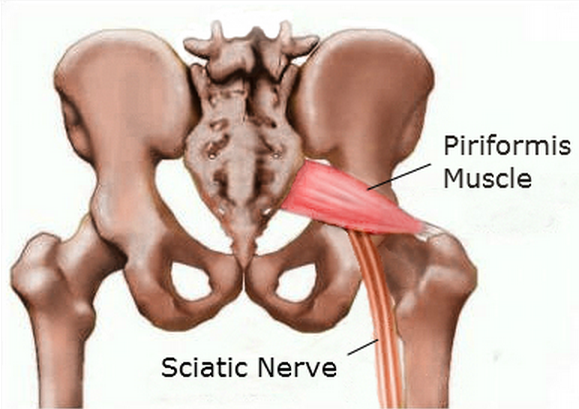 New Health Guide
New Health Guide
 The piriformis muscle is situated in the buttocks at the top of the hip joint. By rotating the thigh away from the body and stabilizing the hip joint, it enables you to walk, keep your balance and shift your weight. The sciatic nerve runs alongside and then through the piriformis muscle, traveling down the back of the leg, and finally branching into some smaller nerves that terminate in the feet. Piriformis syndrome is an unusual neuromuscular condition that occurs when the piriformis muscle presses against and compresses the sciatic nerve, for example during muscle spasms.
The piriformis muscle is situated in the buttocks at the top of the hip joint. By rotating the thigh away from the body and stabilizing the hip joint, it enables you to walk, keep your balance and shift your weight. The sciatic nerve runs alongside and then through the piriformis muscle, traveling down the back of the leg, and finally branching into some smaller nerves that terminate in the feet. Piriformis syndrome is an unusual neuromuscular condition that occurs when the piriformis muscle presses against and compresses the sciatic nerve, for example during muscle spasms.
Piriformis syndrome can arise from many everyday activities, including walking, running, climbing stairs, and sitting for a long time. The condition may also result from a traumatic injury, such as a fall or a car accident.
The most frequent symptom of piriformis syndrome is a painful, numbing or tingling sensation traveling from the buttock area down the back of the leg – this is known as sciatica. The feeling may begin as a fierce burning pain deep in the buttocks.
If you experience any of the following, you will need to see your doctor:
Piriformis syndrome usually improves with the appropriate medication and lifestyle changes. However, if the condition is not treated, it may cause irreversible nerve damage, so it is important to see your doctor and follow his/her advice. Here are some treatment options and self-care tips:
Take a temporary break from any activities that exacerbate the pain, for example running or riding a bike.
Make sure that you avoid prolonged periods of sitting by taking regular short walks and stretching.
In the early stages of the condition, place a cold pack on the affected region for about 15 minutes several times a day. After a couple of days, swap the cold pack for a warm pack or heating pad. If the pain continues, switch between the warm and cold treatments.
Non-steroidal anti-inflammatory drugs, such as ibuprofen (Motrin, Advil), aspirin and acetaminophen (Tylenol), as well as naproxen (Aleve) can be used to alleviate the pain.
Try massaging the affected region. Gentle massage can also be combined with ice treatment. Lie down on your stomach and ask someone to carefully massage the painful area using a large ice cube or cold pack. If you are using ice cubes, make sure that you restrict the massage to 8-10 minutes, so that you don’t get any ice burns. Ice massages are particularly useful immediately after specific activities that increase the pain.
If self-treatment hasn’t alleviated the pain, your doctor can give you a steroid injection in the area between the sciatic nerve and piriformis muscle for pain relief.
In severe cases, surgery may be required to ease the pressure on the sciatic nerve.
Sciatic pain can be relieved by stretching the piriformis muscle. There are several exercises stretching the piriformis, hamstring, and hip extensor muscles that can help alleviate pain along the sciatic nerve and increase your range of motion.
Watch the video below to learn Top 3 Exercises for Piriformis Syndrome:
To prevent piriformis syndrome developing or recurring once your symptoms improve, follow these tips: